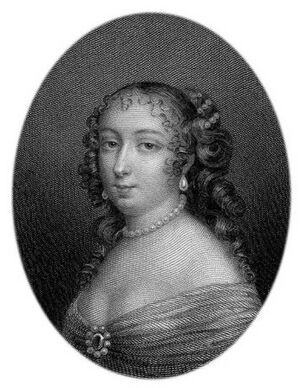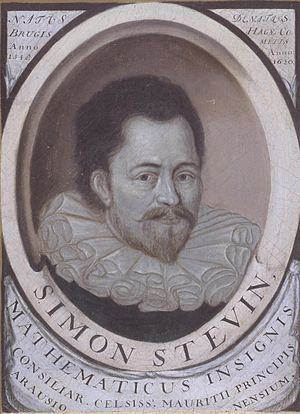Marie Crous facts for kids
Marie Crous was a French mathematician who was active around 1641. She brought the idea of the decimal system to France in the 1600s. This system helps us use numbers with points, like 3.14.
Who Was Marie Crous?
Marie Crous came from a humble background. She grew up to be a talented writer and teacher. She even taught Charlotte-Rose de Caumont La Force.
Marie Crous first published her work in 1636. By 1641, she released an important study about the decimal system. She dedicated this book to a powerful woman named Madame de Combalet, also known as the Duchesse d'Aiguillon. The Duchesse was a niece of Cardinal de Richelieu and was known for supporting artists and thinkers. She was also a friend of the famous scientist Marin Mersenne.
Even with such a powerful supporter, Marie Crous was not recognized by the leading scientists of her time. These scientists were mostly men from a religious group called the Minims. They did not see her as a respected scholar or acknowledge her important work.
Her Big Ideas in Math
Marie Crous's work was printed by Simon Stevin, another famous mathematician. Her ideas went far beyond what was taught in math books back then. She wrote that her book was the only one that taught this new way of calculating.
She introduced two major new ideas:
- The decimal point: This is the dot we use today to separate whole numbers from parts of numbers (like in 3.5). In French, it's called a virgule.
- Using zero in decimals: She showed how to use a zero in the decimal part to show that a place was empty (like in 0.05). She called these zeros nuls, which was how Germans referred to them.
By doing this, she helped create the way we write decimal numbers today.
Marie Crous was good at both writing and math. She developed her own methods for calculations. One of these was called "denominational division." This method was very useful for doing math in your head, especially for solving problems like the "rule of three."
Why Her Work Was Important
Marie Crous's first book came out around 1635 or 1636. It started with a letter to her patron, the Duchesse d'Aiguillon. In this letter, she thanked the Duchesse for helping people like her, who came from simple backgrounds.
However, Marie Crous made sure to say that the new ideas in the book were her own. In the introduction to her book, Abrégé recherche (Research Abstract), she explained that she wrote it to help young women. She wanted them to learn math for their daily lives and for their own enjoyment.
In her introduction to Charlotte de Caumont, Marie Crous talked about how construction workers in Paris were starting to use tenths for measurements. This was a more efficient way than the old units like the toise. She believed that leaders should change money, weights, and measures to use the decimal system. She saw how workers were already marking their tools in tenths.
Because of her ideas, Marie Crous helped set the stage for the decimal metric system, which we use all over the world today.
Later, a mathematician named Olry Terquem wished that a street in Paris had been named after her. More recently, Catherine Goldstein wrote about Marie Crous in her article "Neither public nor private: mathematics in early modern France," bringing more attention to her important contributions.
See also
 In Spanish: Marie Crous para niños
In Spanish: Marie Crous para niños



